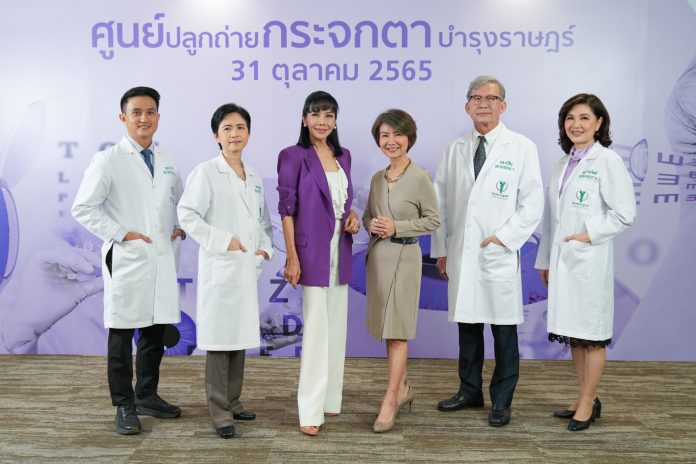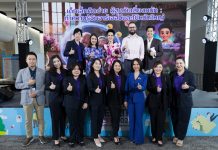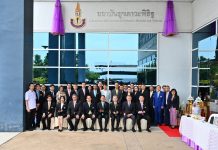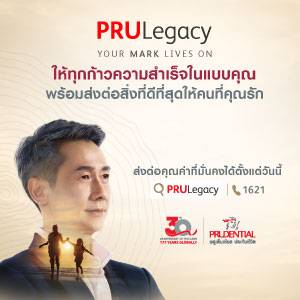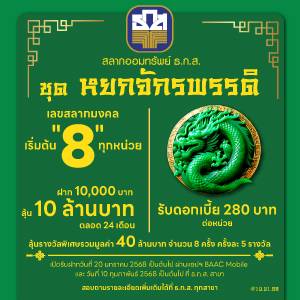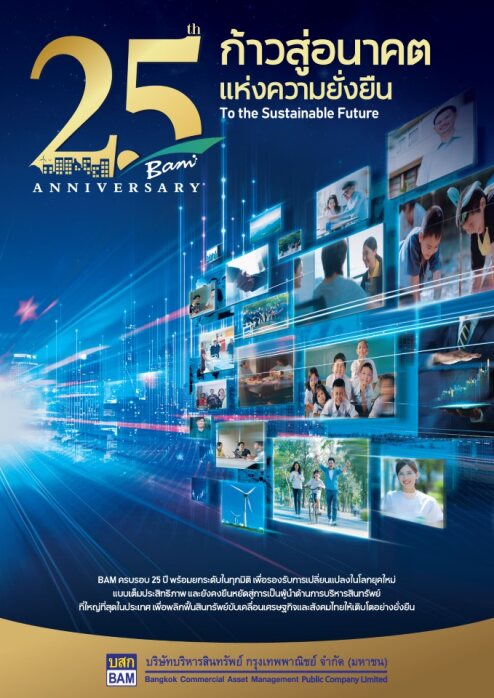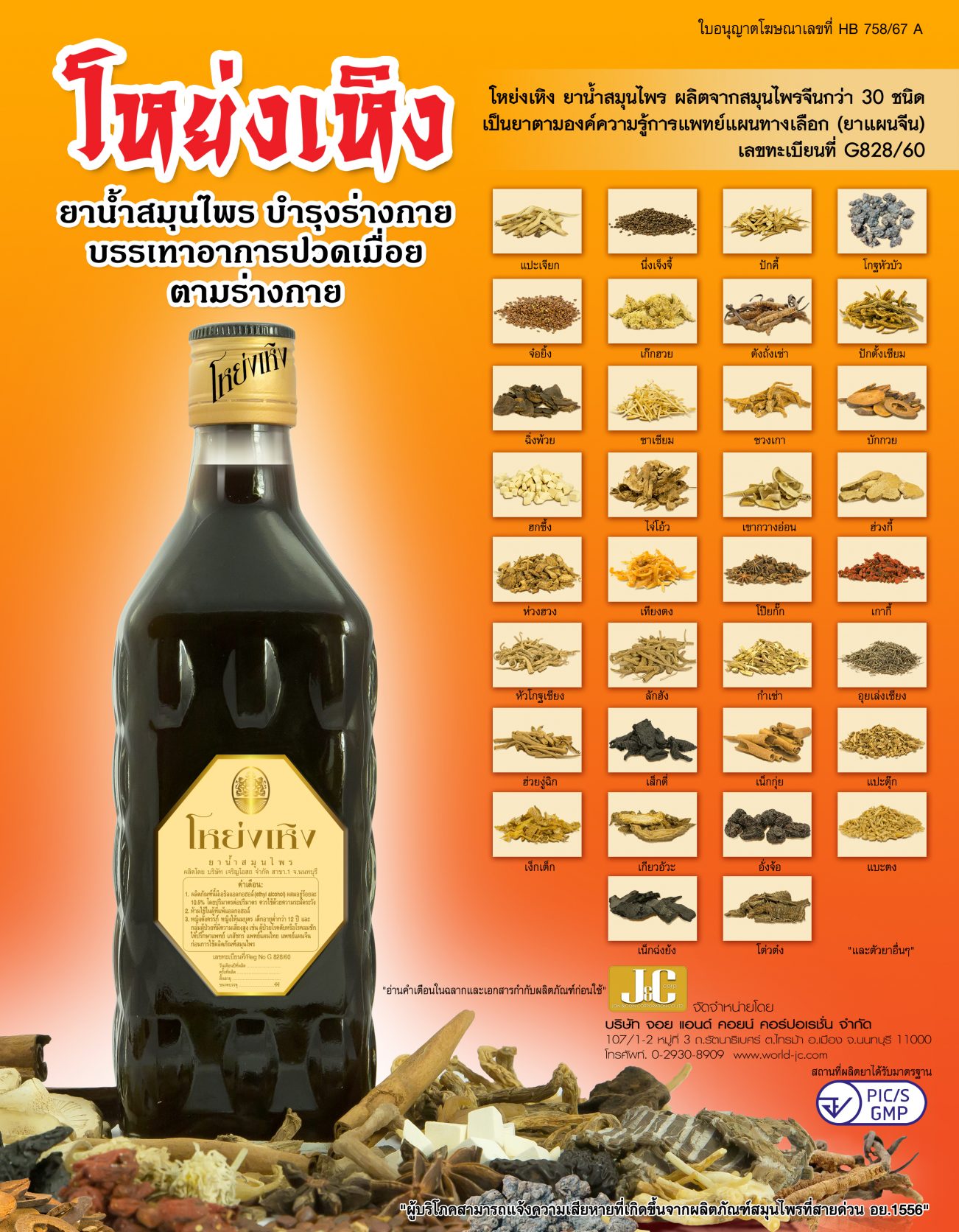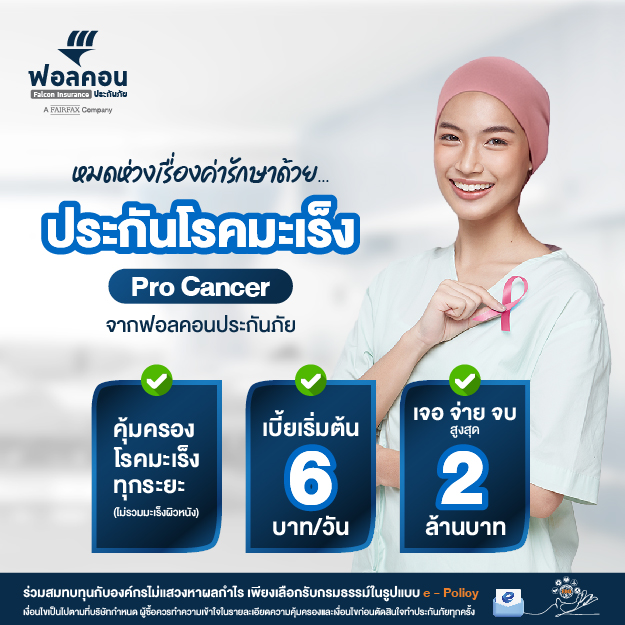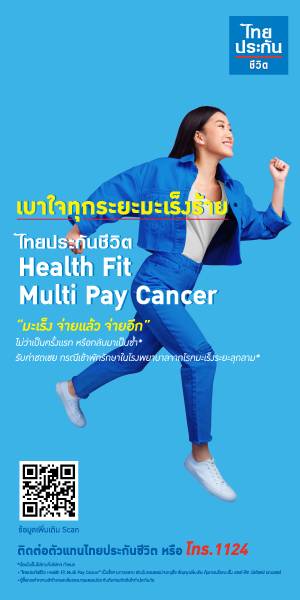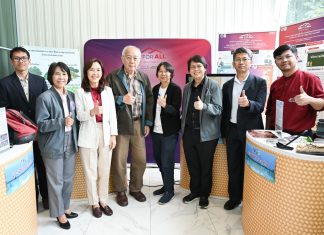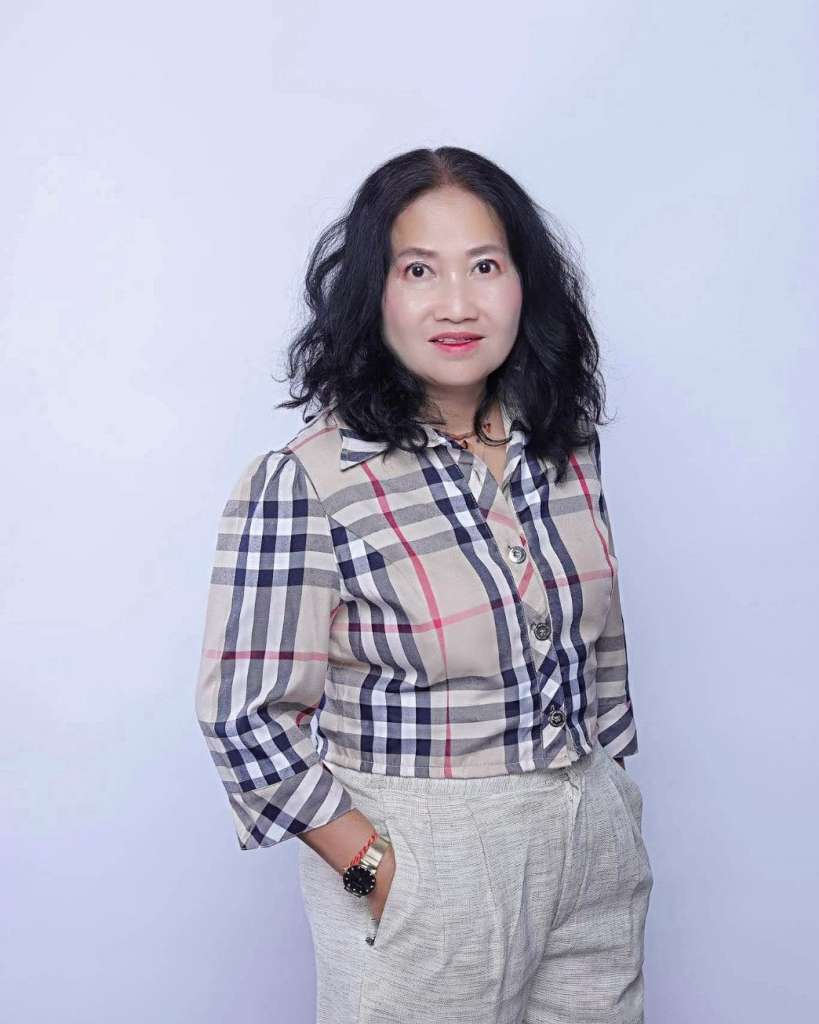องค์การอนามัยโลกระบุว่า ประชากรทั่วโลกมีปัญหาทางสายตาประมาณ 2.2 พันล้านคน ส่วนใหญ่เป็นปัญหาจากความผิดปกติทางสายตา เช่น สายตาสั้น สายตายาว สายตาเอียง หรือจากโรคต้อกระจก ที่ไม่ได้รับการแก้ไข รักษา ทั้งนี้ จากผลสำรวจ The first rapid assessment of avoidable blindness (RAAB) ในประเทศไทย ระบุว่าตาบอดสามารถป้องกันได้กว่า 92% และสามารถรักษาได้กว่า 76.8% โดยสาเหตุของสภาวะตาบอดเกิดจากปัจจัยหลัก 3 ประการ คือ โรคต้อกระจก (Cataract), โรคต้อหิน (Glaucoma) และโรคกระจกตา (Corneal Disease) ซึ่งปัญหาทางการมองเห็นเหล่านี้มักพบในผู้ที่มีอายุตั้งแต่ 50 ปีขึ้นไป แต่ในปัจจุบัน เริ่มพบผู้ที่มีปัญหาเกี่ยวกับดวงตาในกลุ่มที่มีอายุเฉลี่ยน้อยลงอย่างต่อเนื่อง
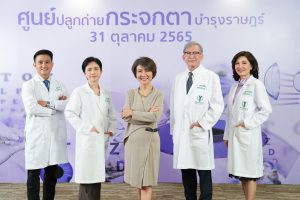
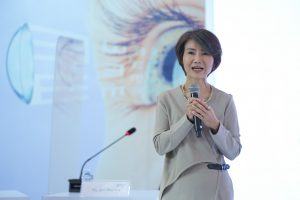
ภญ. อาทิรัตน์ จารุกิจพิพัฒน์ ประธานเจ้าหน้าที่บริหาร โรงพยาบาลบำรุงราษฎร์ เปิดเผยว่า “ตลอด 42 ปีนับตั้งแต่ก่อตั้ง โรงพยาบาลบำรุงราษฎร์ได้ยกระดับการรักษาสู่ขั้นจตุตถภูมิ (Quaternary Care) รวมถึงพัฒนาศูนย์ความเป็นเลิศทางการแพทย์ (Center of Excellence) เพื่อให้การบริบาลดูแลผู้ป่วยได้อย่างครอบคลุม ซึ่ง ‘ศูนย์จักษุ’ เป็นอีกหนึ่งศูนย์ความเป็นเลิศทางการแพทย์ของบำรุงราษฎร์ที่มีความพร้อมในทุกด้าน ทั้งในการบริบาลทางการแพทย์โดยทีมจักษุแพทย์ผู้เชี่ยวชาญในทุกด้านเกี่ยวกับดวงตาและทีมสหสาขาวิชาชีพ ผนวกกับการใช้นวัตกรรมขั้นสูงสำหรับการตรวจวินิจฉัยและรักษา ทำให้ศูนย์จักษุมีศักยภาพในการดูแลรักษาทุกปัญหาเกี่ยวกับสุขภาพตาแม้ในโรคยากและซับซ้อน ซึ่งรวมถึงการเปิด ‘ศูนย์ปลูกถ่ายกระจกตา’ หรือ ‘Cornea Transplant Center’ โดยบำรุงราษฎร์เป็นโรงพยาบาลเอกชนแห่งแรกที่มีศูนย์ปลูกถ่ายกระจกตาที่ให้บริการครอบคลุมในทุกการรักษาที่เกี่ยวกับกระจกตา ซึ่งนับว่าเป็นความภาคภูมิใจของบำรุงราษฎร์อีกครั้งหนึ่ง”
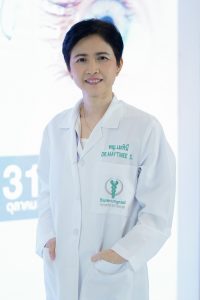
พญ. เมทินี ศิริมหาราช หัวหน้าศูนย์จักษุ โรงพยาบาลบำรุงราษฎร์ กล่าวว่า “เนื่องจากตา เป็นอวัยวะที่สำคัญและประกอบด้วยเนื้อเยื่อต่าง ๆ หลายชนิด จึงจำเป็นต้องมีจักษุแพทย์ผู้ชำนาญการในแต่ละด้านเข้ามาดูแล โดยศูนย์จักษุประกอบด้วยคณะแพทย์ผู้เชี่ยวชาญในด้านต่างๆ ครอบคลุมทุกปัญหาที่เกี่ยวกับดวงตา ได้แก่ ต้อกระจก ต้อหิน ศัลยกรรมจักษุตกแต่งและเสริมสร้างจอประสาทตา ม่านตาอักเสบ โรคกระจกตา โรคตาในเด็กและตาเข จักษุประสาท การผ่าตัดรักษาภาวะสายตาผิดปกติด้วย ReLEx SMILE เป็นต้น ทั้งนี้ ในกรณีที่ผู้ป่วยต้องได้รับการผ่าตัดและจำเป็นต้องได้รับการประเมินสภาพร่างกายและจิตใจ จักษุแพทย์จะทำงานร่วมกับแพทย์เฉพาะทางในสาขาอื่น ๆ ที่เกี่ยวข้อง เช่น อายุรแพทย์ วิสัญญีแพทย์ จิตแพทย์ พร้อมด้วยทีมสหสาขาวิชาชีพ เพื่อส่งมอบการรักษาที่มีคุณภาพและความปลอดภัยสูงสุด โดยศูนย์จักษุ ได้ปรับสถานที่เพื่อให้รองรับกับจำนวนผู้มารับบริการที่เพิ่มขึ้น มีห้องตรวจตาจำนวน 13 ห้อง พร้อมเครื่องมืออุปกรณ์ที่ทันสมัยสำหรับการตรวจวินิจฉัยและรักษาอย่างครบครัน เพื่อให้สามารถรองรับผู้ป่วยโรคตาที่มีความซับซ้อนมากขึ้นด้วย”
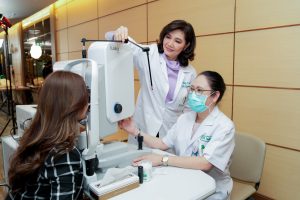
‘ศูนย์ปลูกถ่ายกระจกตา’ โรงพยาบาลบำรุงราษฎร์ ให้บริการครอบคลุมในทุกการรักษาที่เกี่ยวกับกระจกตา อาทิ กระจกตาติดเชื้อ กระจกตาบวม กระจกตาโก่ง กระจกตาเสื่อมจากพันธุกรรม แผลเป็นที่กระจกตา รวมถึงการปลูกถ่ายกระจกตา ซึ่งผู้ป่วยกลุ่มนี้ควรได้รับการวินิจฉัยและการรักษาในเวลาที่เหมาะสม เพราะอาจส่งผลกระทบต่อการมองเห็น หรืออาจรุนแรงถึงขั้นสูญเสียการมองเห็นถาวรได้
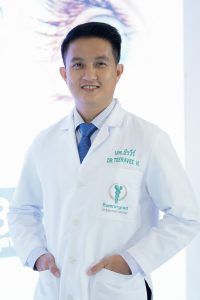
นพ. ธีรวีร์ หงษ์หยก แพทย์ผู้ชำนาญการด้านกระจกตา และผ่าตัดแก้ไขสายตา โรงพยาบาลบำรุงราษฎร์ ให้ข้อมูลว่า กระจกตา คือส่วนที่อยู่ด้านหน้าสุดของดวงตาดำ มีลักษณะโค้งใส มีทั้งหมด 5 ชั้น ทำหน้าที่ให้แสงผ่าน และหักเหแสงให้มาตกรวมกันที่จอตาด้านในเพื่อการมองเห็นที่ดีขึ้น ซึ่งหากผู้ป่วยเริ่มมีอาการมองไม่ชัดหรือเป็นฝ้าหมอก, ตาไม่สู้แสง, ค่าสายตาเปลี่ยนบ่อย, สายตาเอียงมากผิดปกติ, มองเห็นแสงฟุ้งๆ หรือเห็นแสงเป็นวงรอบเมื่อมองดวงไฟ, รู้สึกระคายเคืองขณะใส่คอนแทคเลนส์ หรือเกิดอุบัติเหตุ กระจกตาเป็นแผลหรือขุ่นมัว อาจแสดงได้ว่ากระจกตาอาจเริ่มมีปัญหา จึงควรจะต้องมาพบแพทย์เพื่อทำการประเมินและวินิจฉัยอาการดังกล่าว โดยจักษุแพทย์จะตรวจตาอย่างละเอียด และอาจใช้เครื่องมือในการประเมินพยาธิสภาพของกระจกตา เช่น เครื่อง Corneal Topographer ซึ่งช่วยในการดูรูปร่างของกระจกตาเพื่อให้ได้ข้อมูลที่ถูกต้องและครบถ้วน

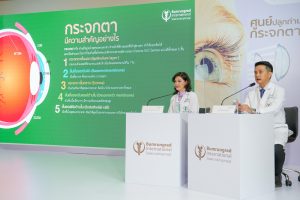
สาเหตุที่ทำให้กระจกตาขุ่น เป็นฝ้าขาว บวมขึ้น หรือ ทำให้กระจกตาโค้งเบี้ยวผิดรูปร่างไป ที่พบได้บ่อยในต่างประเทศ ได้แก่ โรคความเสื่อมของเซลล์กระจกตาด้านในจากพันธุกรรม เซลล์ด้านในของกระจกตามีหน้าทำให้กระจกตาใสโดยการควบคุมน้ำในกระจกตา เมื่อเสื่อมจึงทำให้กระจกตาบวม หนา เป็นฝ้าได้ และโรคกระจกตาโก่งย้วย ที่อาจจะสัมพันธ์กับภูมิแพ้ที่ไม่ได้ควบคุม ทำให้ขยี้ตามาเป็นระยะเวลานาน จนเกิดภาวะกระจกตาอ่อนแอ บางลง และโก่งเบี้ยวผิดรูปไป ส่วนในประเทศไทยจะพบกระจกตาขุ่นจากแผลติดเชื้อที่กระจกตาได้บ่อยกว่า ซึ่งอาจเกิดจากการทำงาน การใส่คอนแทคเลนส์ที่ไม่ได้ดูแลให้ดี หรือการขี่มอเตอร์ไซค์ที่ไม่ใส่หมวกกันน็อค ซึ่งจะช่วยป้องกันศีรษะและดวงตา อีกสาเหตุที่พบบ่อย คือ กระจกตาเสื่อมบวมภายหลังการผ่าตัดตาที่ซับซ้อน นอกจากนั้น กระจกตาเสื่อมจากพันธุกรรม หรือกระจกตาขุ่นผิดปกติตั้งแต่กำเนิด ก็พบได้ไม่น้อยเช่นกัน ทั้งหมดล้วนมีผลทำให้เกิดแผลเป็นฝ้าขาวที่กระจกตา กระจกตาบวมหรือความโค้งที่ผิดรูปร่างไป ซึ่งจะทำให้เกิดการสูญเสียการมองเห็นได้อย่างรุนแรง ซึ่งหลายๆ โรคก็สามารถแก้ไขได้ โดยการ ‘การปลูกถ่ายกระจกตา’ เพื่อให้กระจกตากลับมาใส และมองเห็นได้อีกครั้งหนึ่ง
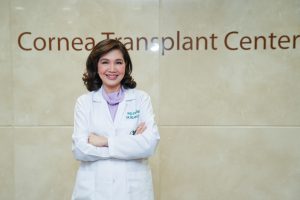
รศ.พญ. งามจิตต์ เกษตรสุวรรณ ประธานชมรมกระจกตาและการแก้ไขสายตาแห่งประเทศไทย และแพทย์ผู้ชำนาญการด้านกระจกตา โรงพยาบาลบำรุงราษฎร์ กล่าวถึงวิธีการปลูกถ่ายกระจกตา จะเป็นการผ่าตัดเอากระจกตาของผู้ป่วยที่ขุ่นหรือเป็นโรคออก แล้วปลูกถ่ายด้วยกระจกตาของผู้บริจาค ข้อดีของการรักษาด้วยการปลูกถ่ายกระจกตา คือจะช่วยแก้ไขปัญหาการมองเห็นของผู้ป่วยให้ดีขึ้น ช่วยเสริมความแข็งแรงของกระจกตาในกรณีที่ผู้ป่วยมีกระจกตาบางหรือทะลุ และช่วยควบคุมการติดเชื้อที่กระจกตาในกรณีที่ผู้ป่วยมีการติดเชื้อที่กระจกตา ซึ่งการรักษาจะใช้กล้องผ่าตัดรุ่นใหม่ที่มีการผนวกเทคนิคที่ช่วยในการตรวจชั้นต่างๆ ของกระจกตาในระหว่างผ่าตัด (Microscope-integrated intraoperative optical coherence tomography) ช่วยให้การผ่าตัดกระจกตามีความแม่นยำมากขึ้น การผ่าตัดเปลี่ยนกระจกตาแบ่งออกได้เป็น 2 วิธี คือ
1. การปลูกถ่ายกระจกตาทุกชั้น (Penetrating keratoplasty) กรณีที่ผู้ป่วยมีกระจกตาขุ่นทุกชั้น (ซึ่งกระจกตามีทั้งหมด 5 ชั้นย่อย หรีอ 3 ชั้นหลัก คือ ชั้นผิวหรือชั้นบน ชั้นกลาง และชั้นหรือชั้นเยื่อบุ) หรือทำงานได้ไม่ดี การผ่าตัดวิธีนี้ จะผ่าตัดโดยเอากระจกตาทุกชั้นที่มีพยาธิสภาพออกและนำกระจกตาที่มีความหนาแบบเดียวกันและมีทุกชั้นใส่เข้าไปแทนที่
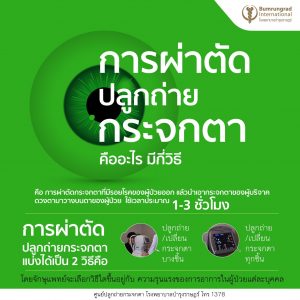
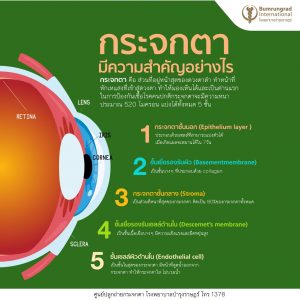 2. การปลูกถ่ายกระจกตาเฉพาะชั้น (Lamellar keratoplasty) ในกรณีที่ผู้ป่วยมีกระจกตาเสียหายเฉพาะบางส่วน ก็จะทำการปลูกถ่ายเฉพาะบางชั้น ได้แก่ การปลูกถ่ายกระจกตาเฉพาะชั้นบน (Anterior lamellar keratoplasty) ซึ่งมีข้อดีคือ ไม่ต้องตัดกระจกตาชั้นเยื่อบุโพรงหรือกระจกตาชั้นในสุดทิ้งไป จึงช่วยลดโอกาสเสี่ยงที่ร่างกายผู้ป่วยจะปฏิเสธกระจกตาที่เกิดจากการปลูกถ่ายได้ รวมทั้งลดภาวะแทรกซ้อนอื่นๆ ได้ด้วย การผ่าตัดปลูกถ่ายกระจกตาเฉพาะชั้นอีกชนิดหนึ่งคือ การปลูกถ่ายกระจกตาเฉพาะชั้นเยื่อบุโพรงกระจกตาหรือกระจกตาชั้นใน (Endothelial keratoplasty) เป็นการนำเยื่อบุโพรงกระจกตาชั้นในที่มีพยาธิสภาพออก และทดแทนด้วยเยื่อบุโพรงกระจกตาจากดวงตาบริจาคที่นำมาปลูกถ่าย ซึ่งกระจกตาชั้นนี้มีความบางมาก ประมาณ 10-15 ไมครอน จึงเป็นการผ่าตัดที่ละเอียดอ่อนมาก นอกจากนี้การผ่าตัดชนิดนี้ยังมีขนาดแผลผ่าตัดที่เล็กเพียง 3-5 มิลลิเมตร ทำให้ลดภาวะแทรกซ้อนต่างๆ ได้มาก ที่สำคัญ มีการฟื้นตัวของสายตาที่เร็วมากนับเป็นสัปดาห์ เร็วกว่าการปลูกถ่ายกระจกตาทุกชั้นอย่างมาก
2. การปลูกถ่ายกระจกตาเฉพาะชั้น (Lamellar keratoplasty) ในกรณีที่ผู้ป่วยมีกระจกตาเสียหายเฉพาะบางส่วน ก็จะทำการปลูกถ่ายเฉพาะบางชั้น ได้แก่ การปลูกถ่ายกระจกตาเฉพาะชั้นบน (Anterior lamellar keratoplasty) ซึ่งมีข้อดีคือ ไม่ต้องตัดกระจกตาชั้นเยื่อบุโพรงหรือกระจกตาชั้นในสุดทิ้งไป จึงช่วยลดโอกาสเสี่ยงที่ร่างกายผู้ป่วยจะปฏิเสธกระจกตาที่เกิดจากการปลูกถ่ายได้ รวมทั้งลดภาวะแทรกซ้อนอื่นๆ ได้ด้วย การผ่าตัดปลูกถ่ายกระจกตาเฉพาะชั้นอีกชนิดหนึ่งคือ การปลูกถ่ายกระจกตาเฉพาะชั้นเยื่อบุโพรงกระจกตาหรือกระจกตาชั้นใน (Endothelial keratoplasty) เป็นการนำเยื่อบุโพรงกระจกตาชั้นในที่มีพยาธิสภาพออก และทดแทนด้วยเยื่อบุโพรงกระจกตาจากดวงตาบริจาคที่นำมาปลูกถ่าย ซึ่งกระจกตาชั้นนี้มีความบางมาก ประมาณ 10-15 ไมครอน จึงเป็นการผ่าตัดที่ละเอียดอ่อนมาก นอกจากนี้การผ่าตัดชนิดนี้ยังมีขนาดแผลผ่าตัดที่เล็กเพียง 3-5 มิลลิเมตร ทำให้ลดภาวะแทรกซ้อนต่างๆ ได้มาก ที่สำคัญ มีการฟื้นตัวของสายตาที่เร็วมากนับเป็นสัปดาห์ เร็วกว่าการปลูกถ่ายกระจกตาทุกชั้นอย่างมาก
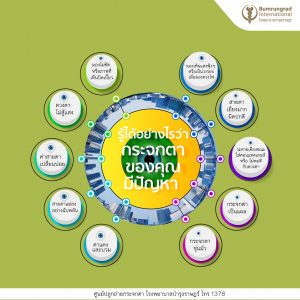
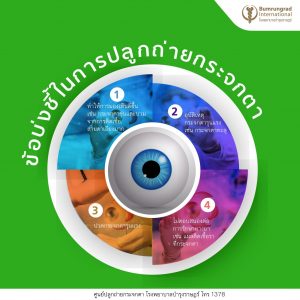
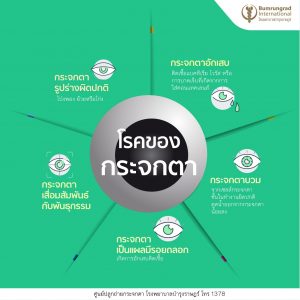
ในกรณีที่ผู้ป่วยมีอาการโรคกระจกตาที่ซับซ้อนมากขึ้น ศูนย์ปลูกถ่ายกระจกตา โรงพยาบาลบำรุงราษฎร์ มีทีมแพทย์ผู้ชำนาญการหลากหลายสาขาที่พร้อมให้การบริบาลดูแลรักษาโรคที่ซับซ้อน และมีเทคนิคการรักษาที่หลากหลาย โดยบางครั้งแพทย์อาจต้องใช้วิธีอื่นรักษาร่วมด้วย เช่น Phototherapeutic Keratectomy (PTK) คือการรักษาโรคของกระจกตาด้วยเอ็กไซเมอเลเซอร์, การฉายแสงอัลตราไวโอเลตเอ (Corneal collagen cross-linking) เพื่อเสริมความแข็งแรงเส้นใยคอลลาเจนในกระจกตา และการผ่าตัดใส่วงแหวน (Intrastromal Corneal Ring Segment) เพื่อปรับความโค้งของกระจกตา เพื่อให้การมองเห็นมีประสิทธิภาพมากที่สุด
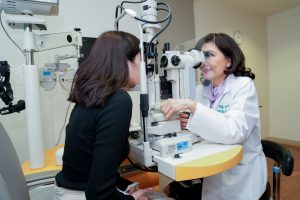
สำหรับสถานการณ์การจัดหาและบริการดวงตาของศูนย์ดวงตาสภากาชาดไทยในปัจจุบัน มีรายงานว่าผู้ป่วยที่ต้องเข้ารับการปลูกถ่ายกระจกตาจะต้องใช้เวลารอคิวบริจาคประมาณ 3-5 ปี ซึ่งยอดบริจาคดวงตาหลังเสียชีวิตมีเพียง 2% ของประชากรไทย ขณะที่แต่ละปีมีผู้ขอรับบริจาคดวงตามากกว่า 1,000 คน และมีแนวโน้มเพิ่มขึ้นทุกปี โดยเฉลี่ยแต่ละปีจะมีผู้ที่ได้รับการปลูกถ่ายกระจกตาเพียง 600 – 700 ราย ปัจจุบันยังมีผู้รอคอยดวงตามากกว่า 17,000 คน ด้วยข้อจำกัดเรื่องระยะเวลา อาจทำให้อาการผู้ป่วยจากที่เป็นน้อยๆ เริ่มเป็นมากขึ้น ส่งผลให้การรักษายากขึ้นและมีความเสี่ยงมากขึ้น เช่น กรณีที่เบาหวานขึ้นตาก็ไม่สามารถยิงเลเซอร์รักษาได้ ทำให้ภาวะของโรคแย่ลง และมีภาวะแทรกซ้อนอื่นตามมา
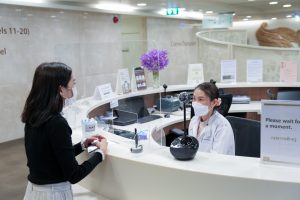
“ศูนย์ปลูกถ่ายกระจกตา โรงพยาบาลบำรุงราษฎร์ จึงเป็นอีกทางเลือกที่มีศักยภาพและมีแนวทางในการดำเนินการจัดหาดวงตาบริจาคเพื่อนำไปผ่าตัดเปลี่ยนกระจกตาให้แก่ผู้ป่วยได้สะดวกและรวดเร็วขึ้น นับเป็นการแบ่งเบาภาระจากภาครัฐในการดูแลรักษาผู้ป่วยโรคกระจกตาที่มีความจำเป็นต้องรักษาด้วยการปลูกถ่ายกระจกตาให้สามารถเข้าถึงการรักษาที่มีคุณภาพในเวลาที่เหมาะสมให้ทั่วถึงยิ่งขึ้น เพื่อให้ผู้ป่วยสามารถกลับมามีคุณภาพการมองเห็นและคุณภาพชีวิตที่ดีอีกครั้ง” รศ.พญ. งามจิตต์ เกษตรสุวรรณ กล่าวปิดท้าย
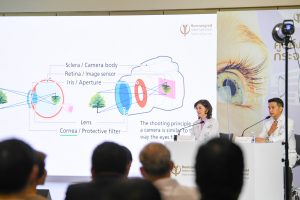
ด้วยศักยภาพความพร้อมของทีมแพทย์ของโรงพยาบาลบำรุงราษฎร์ที่มีประสบการณ์และความชำนาญการในการผ่าตัดปลูกถ่ายอวัยวะมากว่า 30 ปี ทั้งการปลูกถ่ายไต ปลูกถ่ายตับ และปลูกถ่ายหัวใจ ปัจจุบัน อัตราความสำเร็จของการผ่าตัดปลูกถ่ายกระจกตา อยู่ที่ 70-95% ขึ้นอยู่กับอาการและโรคที่ผู้ป่วยเป็น ซึ่งเป็นการผ่าตัดปลูกถ่ายอวัยวะที่ประสบความสำเร็จมากที่สุดเมื่อเทียบกับการปลูกถ่ายอวัยวะอื่นๆ ปัจจัยที่ส่งผลต่อความสำเร็จของการผ่าตัดปัจจัยหนึ่ง คือ ความพอดีของรอยต่อของแผลระหว่างเนื้อเยื่อกระจกตาของผู้ป่วย และเนื้อเยื่อกระจกตาที่นำมาปลูกถ่าย ดังนั้นเทคนิคการตัดกระจกตา (Trephination) ทั้งกระจกตาที่นำมาปลูกถ่ายและเนื้อเยื่อกระจกตาของผู้ป่วยจึงมีความสำคัญมาก การปลูกถ่ายกระจกตาจึงจำเป็นต้องใช้แพทย์ที่มีประสบการณ์และความชำนาญขั้นสูงในการผ่าตัด ทั้งนี้ ผู้ที่มีอายุ 45 ปีขึ้นไป และผู้ที่มีปัญหาเกี่ยวกับสุขภาพตา ควรเข้ารับบริการตรวจ screening สุขภาพตาเป็นประจำทุกปี
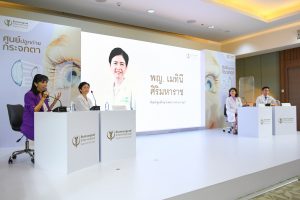
สอบถามรายละเอียดเพิ่มเติมได้ที่ ศูนย์ปลูกถ่ายกระจกตา โรงพยาบาลบำรุงราษฎร์ ชั้น 18 อาคาร A (คลินิก) หรือโทร. 0-2 011 3886 หรือโทร. 137
Bumrungrad enhances its eye center by opening the Cornea Transplant Center, which is the first private hospital in Thailand that provides comprehensive services for the most complex corneal conditions.
According to the World Health Organization, 2.2 billion people experience untreated vision-related health conditions, like myopia, hyperopia, or astigmatism and cataracts. The study of the first rapid assessment of avoidable blindness (RABB) revealed that 92% of blindness in Thai population is preventable and 76.8% is treatable. Moreover, the top 3 causes of blindness are: 1) cataracts 2) glaucoma and 3) corneal disease. Frequently, such vision problems are seen in those aged 50 and over. However, these vision problems are now seen in younger and younger people as time goes on.
Mrs. Artirat Charukitpipat, CEO of Bumrungrad International Hospital, revealed that, “Over the course of Bumrungrad International Hospital’s 42 years of existence, it has continuously pushed the standard of care forward to provide quaternary care and leveraged its centers of excellence to deliver comprehensive care to each and every patient. The Eye Excellence Center is another center of excellence, which stands ready to deliver holistic care to our patients through our team of expert eye doctors & specialists, which are supplemented by the latest innovations in advanced diagnostics and treatments. Together, all of these give the Bumrungrad Eye Excellence Center the capability to treat the most difficult and complex cases of ophthalmic disease. Hence, the Bumrungrad Cornea Transplant Center is an extension of such capabilities, as Bumrungrad is the first private hospital to host such a center providing complete corneal care and treatment and is another proud achievement of Bumrungrad International Hospital.”
Dr. Maytinee Sirimaharaj, Ophthalmologist and Chairperson of Department of Ophthalmology at Bumrungrad International Hospital, stated that “Since eyes are important organs and are made up of many types of tissues, it is necessary for patients to have access to a variety of ophthalmologists. At the Bumrungrad Eye Excellence Center, our patients are cared for by a team of ophthalmologists, who practice a variety of specialties, and deliver holistic care to our patients in the treatment of cataracts, glaucoma, oculoplastic surgery, retinal disease, uveitis, corneal diseases, pediatrics and strabismus, optic nerve disease and refractive surgery with ReLEx SMILE. Bumrungrad offers the stringent physical and mental care; the multidisciplinary teams of the healthcare professionals work closely with ophthalmologists, internists, anesthesiologists, and psychiatrists to deliver the highest quality and safest medical care to our patients. The Bumrungrad Eye Excellence Center has expanded to accommodate higher patient numbers and now encompasses 13 treatment rooms equipped with the latest diagnostic and treatment facilities, which can accommodate the treatment of even the most complex and difficult cases.”
The Bumrungrad Cornea Transplant Center treats all types of corneal conditions, for example, keratitis, corneal edema, keratoconus, hereditary corneal degeneration, corneal ulcers, and corneal transplantation. Each eye condition requires adherence to the treatment timelines because taking action at inappropriate times can have negative effects on patient outcomes, and even put their sight at risk.
Dr. Teeravee Hongyok, Cornea Specialist at Bumrungrad International Hospital, shared that, the cornea is the clear window that sits atop the front of the eye. In all it has 5 layers. The cornea’s main duty is to refract light on the innermost retinal layer to allow the eye to clearly see objects, near and far. So, if one experiences blurry vision, sensitivity to light, frequent changes in visual acuity, severe astigmatism, glare, halo, irritation while wearing contact lenses, or accidental ulceration of the cornea, occluded vision it may be indicative of the onset of a corneal condition, requiring prompt examination, diagnosis, and treatment. The ophthalmologists will carry out thorough eye examinations and use medical tools such as the corneal topographer to evaluate the real shape and curvature of the cornea.
There are many causes of the cloudy, swollen and distorted cornea. The commonly found corneal diseases in other countries are the inherited degeneration of the inner layer of the cornea and keratoconus. Concerning the corneal degeneration, the inner layer of the cornea is essential in keeping the cornea clear. When it is degenerated, the cornea is swollen, becomes thicken, and gets cloudy. Keratoconus is usually related to untreated allergy. The patient always rubs their eyes for a long time, resulting in a weak, fragile, and distorted cornea. In Thailand, the cloudy cornea is more often found because the cornea gets infected from unhealthy working conditions, contact lenses, or not wearing a helmet or an eye protection when riding a motorcycle. Another common case is following the complicated eye surgery. The hereditary or congenital corneal degeneration are also commonly found. All of the conditions cause ulcers, corneal abrasion, swollen cornea, and distorted cornea. It can result in loss of vision, but it can be treated through corneal transplantation to make the cornea clear and enable the patient to see again.
Assoc. Prof. Dr. Ngamjit Kasetsuwan, Cornea specialist at Bumrungrad International Hospital and President of Cornea and Refractive Surgery Society of Thailand, stated that corneal transplantation is a surgical procedure which removes the patient’s damaged cornea and replaces it with a donor cornea. The benefits of corneal transplantation are that it improves patient visual acuity, corneal strength, for those with thin or perforated corneas, and can prevent secondary infection in those with severe corneal infections. Bumrungrad offers surgeries with the microscope-integrated intraoperative optical coherence tomography, which enhances surgical techniques and improves the treatment outcome. The 2 primary methods of corneal transplantation are:
1.) Penetrating Keratoplasty (or PKP/PK) is a full-thickness, complete transplant of the damaged or diseased cornea with a donor cornea.
2.) Lamellar Keratoplasty is the removal and replacement of only the diseased or dysfunctional corneal layers, preserving the healthy portion of the patient cornea.
2.1 Anterior lamellar keratoplasty involves replacing only the front parts of the cornea. The advantages of anterior lamellar keratoplasty are preservation of the innermost layers of the cornea, reduction in donor cornea rejection, and fewer complications.
2.2 Endothelial keratoplasty involves the removal and replacement of the inner layer of the cornea. The incision size is limited to 3 – 5 millimeters in length, and complications & recovery time are greatly reduced, approximately in a few weeks, compared to penetrating keratoplasty.
Bumrungrad Cornea Transplant Center also provides the best care for other complex corneal diseases delivered by our corneal experts and high technology. For example, we offer treatment with Excimer laser phototherapeutic keratectomy (PTK), the corneal collagen cross-linking to strengthen the collagen fibrils of the cornea and the insertion of intrastromal corneal ring segments to correct the curvature of the cornea and improve the vision.
The Thai Red Cross Eye Bank reports that patients in need of cornea transplants must usually wait 3 to 5 years, as only 2% of Thais are eye donors. Each year, over 1,000 people are added to the corneal donation waiting list and these numbers are increasing. In contrast, only 600 to 700 people receive a donated cornea each year, while presently there are about 17,000 people waiting for corneal transplants. The long waiting period can greatly worsen the symptoms, prognosis and visual outcome. For example, a diabetic patient with cloudy cornea may develop retinopathy overtime, which cannot be treated properly.
“The Bumrungrad Cornea Transplant Center is another place where patients can waitlist for corneal transplantation in a faster and more convenient manner to reduce the stress on the public health system. Hence, our cornea transplant patients can receive the right care at the right time, allowing them to recover both their sight and quality of life,” Assoc. Prof. Dr. Ngamjit Kasetsuwan concluded.
Bumrungrad International Hospital has been performing organ transplantation for over 30 years and so has developed an expert capacity to perform a wide range of complex transplant procedures, such as kidney, liver and heart transplants. Currently, our corneal transplant procedures have a likelihood of success between 70% and 95%, depending on the diagnosis and severity of diseases. Such a high success rate makes corneal transplantation procedures among the most successful of all organ transplant procedures performed at Bumrungrad. The most important factors affecting the success of corneal transplantation are the fineness of the connection between the patient eye tissue and the donor tissue and the techniques used to perform patient corneal trephination and the shaping of the donor & patient eyes tissues. Successful corneal transplantation requires experienced and skilled ophthalmologists. People 45 years of age and older and those who experiencing ocular conditions should have an annual eye examination.
For more information, please contact the Cornea Transplant Center, Bumrungrad International Hospital, 18th Floor, Building A (Clinic), or call +6620113886 and 1378.



